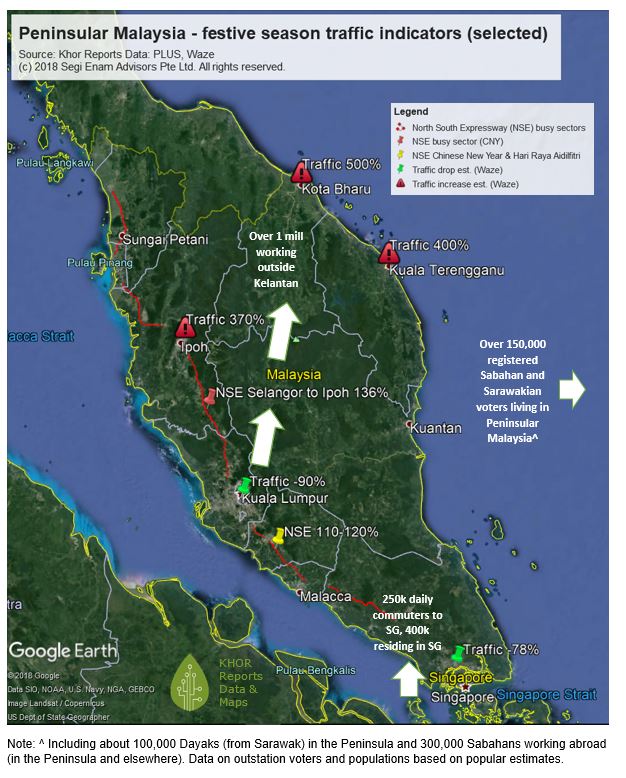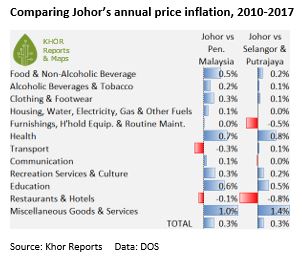Malaysia: The Political Economy of Social Media in GE14
A report by Khor Yu Leng, with map data analytics and comments featured in The Straits Times, Singapore.
Malaysia communications has rapidly evolved between GE13 and GE14. Just a couple of years ago only available in the urban-industrial regions, there is now readier access to mobile social media use as wider telco coverage has arrived.
Survey data about online markets points to 21 million or 68% of Malaysia’s 31 million population as active WhatsApp users as of 3Q2017. By comparison 65% of Germans and 40% of Indonesians were WhatsApp users. Anecdotally, some rural East Malaysians report that their families now have WhatsApp groups. By contrast, even Peninsula urban users in GE13 did not have mobile messaging groups.
The change in geospatial reach is shown in Diagram 1a: Expanding Broadband Coverage (upper), which highlights 4G coverage areas claims (green) by the major telcos. This analysis takes 4G as a proxy indicator for cost-efficient 3G services that the wider population could start to use.
For instance, on a prepaid service basic high-speed internet plans are RM35-45/month with unlimited messaging. Official data on household expenditure pegs spending by Johor rural households on phone services at RM150/month. This suggests that three family members could already afford this with a fourth and fifth at a pinch; if they all have smartphones.
Diagram 1: Expanding broadband coverage
Khor Reports map data analytics
Featured in The Straits Times, Singapore. Source: Khor Yu Leng, Khor Reports - Segi Enam Advisors Data: Celcom and DiGi for 4G coverage and author’s estimates for Felda-FGV zones.
Diagram 1b: Expanding Broadband Coverage (lower) shows Johor’s parliamentary constituencies, Felda areas (blue) and mobile social media zones (GE14 green and GE13 orange)
How will mobile social media be used in GE14?
We look at the use of Twitter in this brief review. Many Malaysia political analysts view Twitter as a niche segment of particularly vocal urbanites tapping out their views on their smartphones. In that regard, we should interpret this useful dataset as the tip of the proverbial Malaysia social media iceberg.
Malaysian politicians are all active on Twitter. The number of Twitter followers for the top leaders of the ruling and opposition coalitions are shown below, alongside their latest tweet mentions and hashtags.
Table 1: Twitter and key political leaders
Hashtags (a word or phrase preceded by a hash mark #) within a tweet facilitates searches by identifying a topic of interest or keyword. A preliminary look at a recent week’s of data, shows that use of Twitter hashtags has hardly been “saturative.”
Even the presence of the much talked-about pro-Barisan Nasional cybertroopers seems fairly contained on Twitter (they are considered more active on Facebook, including disrupting comments flows). This is apparent at #KamiGengNajibRazak where sentiment is decidedly more positive than at #NajibRazak. Lower engagements for party or coalition hashtags show weak coordinated usage so far.
Diagram 2: Selected Twitter hashtags in a recent week
It appears that issue related hashtags are more prominent in Twitter Malaysia. While #1MDB and #Felda are viewed by analysts as niche issues (not likely swaying the average voter from supporting Barisan Nasional), they are popular on Twitter. Basic economics is seen as being core issues for opposition politicians to activate voter discontent, but the cost of living and #GST are not active issues in tweets.
Those eyeing direct messaging battles could look at #KamiGengNajibRazak versus #KalahkanPencuri (“Defeat the thief”) and #UndiRosak versus #KeluarMengundi.The former has its active promoters (and its detractors or "trolls") accounting for its active mentions.
A lower turnout is a broad worry for GE14, and a vote spoiling group has been a concern. However, “Go Vote” appears more organic in its use (relies less on hyperactive authors or influencers; for instance, those promoting #UndiRosak have to be at least 3x as active) and has an engagement factor of 2.9x versus 0.6x for the “Spoil Your Vote” movement.
Diagram 3: GOTV Twitter hashtags in a recent week
The findings of this review suggests there is still room for more social media activity by both the ruling and opposition coalitions (and individuals therein) as well as by civil society.
Digital reach of political parties thanks to wider telco coverage
In the case of Johor, the digital reach is potentially complete across the entire state, with the exception of the forest zones. However, zooming in on telco maps, rural coverage is actually along the main roads and around key settlements. Rural digital mobile users have to be near villages or the roads to access content, and likely would not have high-speed access from their home or in the field. Whilst not enjoying the same level of immediate access as urban users, this is still a major change from 2013. This affordable access to digital social media is unprecedented, especially in rural Peninsular Malaysia, along the coastal belts and in Johor (Diagram 1a and 1b).
Mobile broadband connections were accessed by 14% of the population in the previous election cycle and now that has risen to about 54% (68% unique mobile users x 80% of mobile connections that are broadband; 2013 versus 2017 in WAS reports for Jan 2014 and Jan 2018).
Major findings:
Malaysia communications has rapidly evolved between GE13 and GE14.
Affordable access to digital social media is unprecedented, especially in rural Peninsular Malaysia, along the coastal belts and in Johor.
A preliminary look at a recent week’s of data, shows that use of Twitter hashtags has hardly been “saturative.” Lower engagements for party or coalition hashtags show weak coordinated usage so far. It appears that issue related hashtags are more prominent in Twitter Malaysia. Basic economics is seen as being core issues for opposition politicians to activate voter discontent, but the cost of living and #GST are not active issues in tweets.
There is still room for more social media activity by both the ruling and opposition coalitions (and individuals therein) as well as by civil society.
Mobile broadband connections were accessed by 14% of the population in the previous election cycle and now that has risen to about 54%.
With map data analytics assisted by Jeamme Chia.
#KhorReports #Malaysia #Johor #PoliticalEconomy #SocialMedia #GeneralElection #GE14 #PRU14 #DataScience #Twitter
(c) 2018, Khor Yu Leng. All rights reserved.













